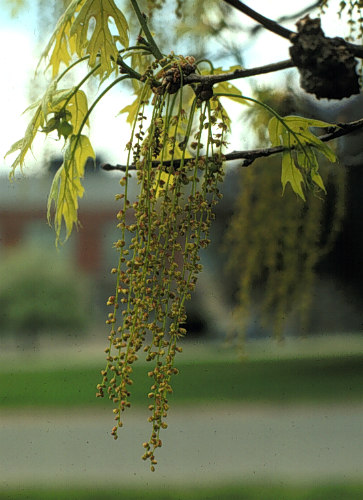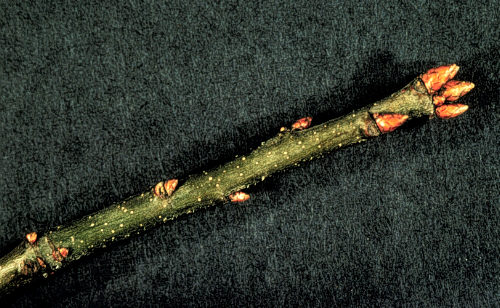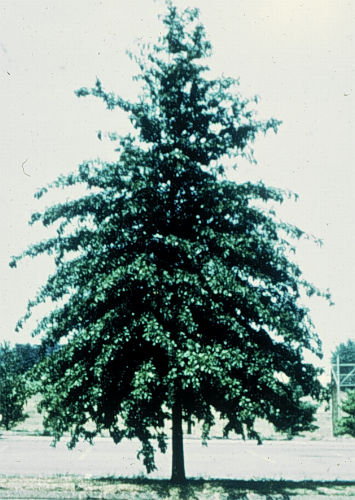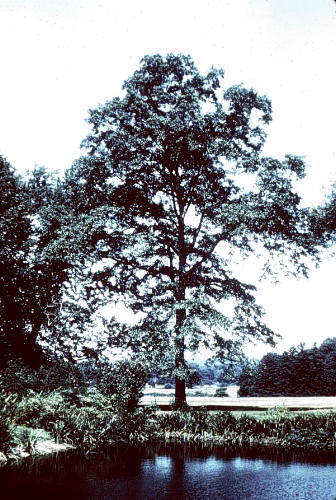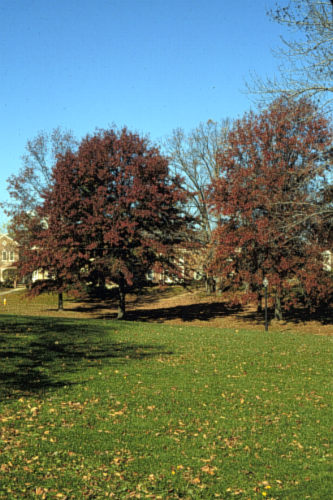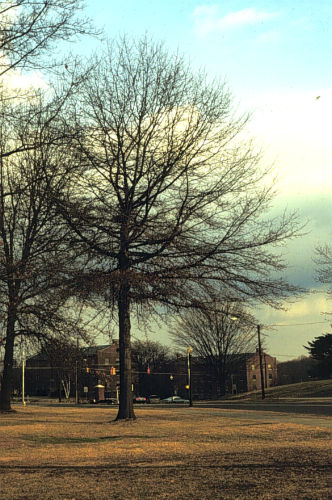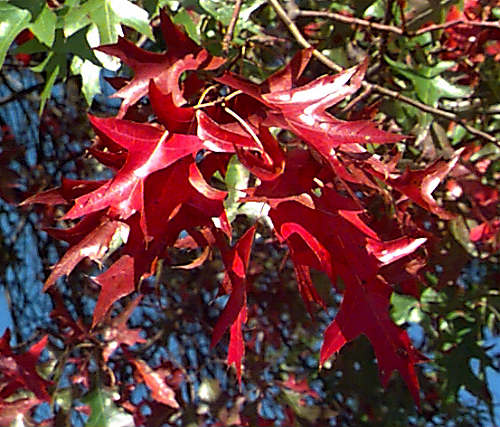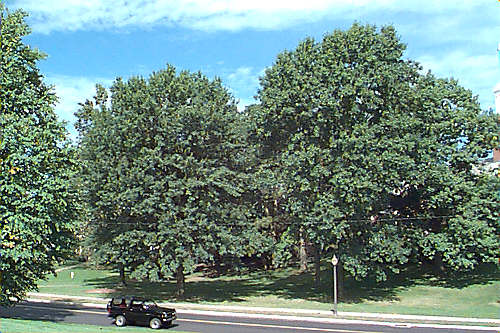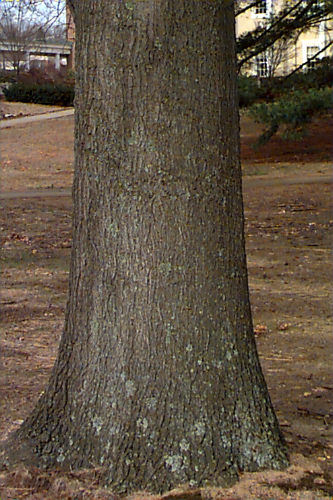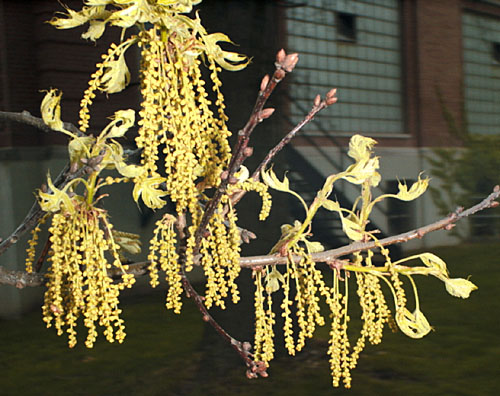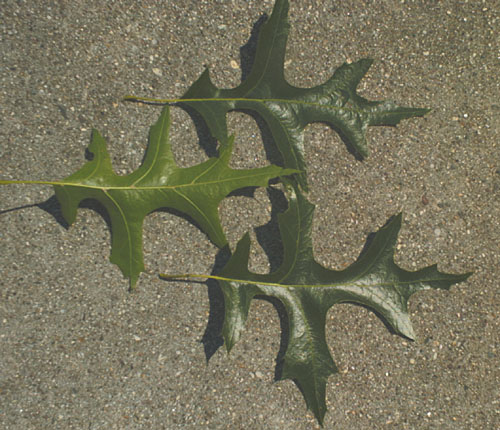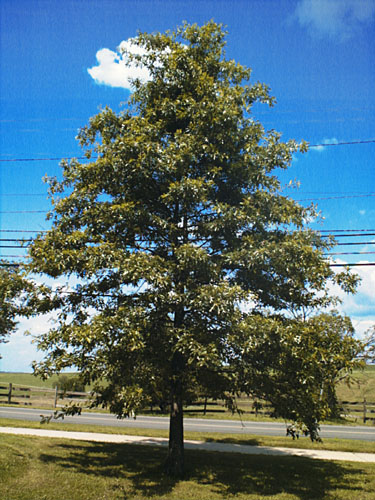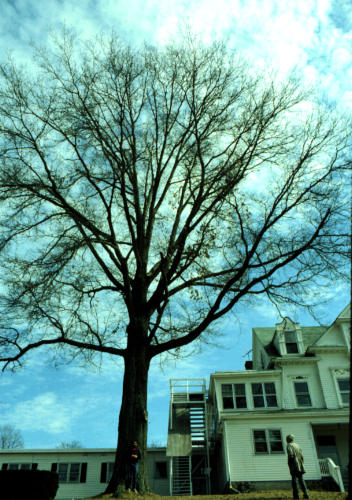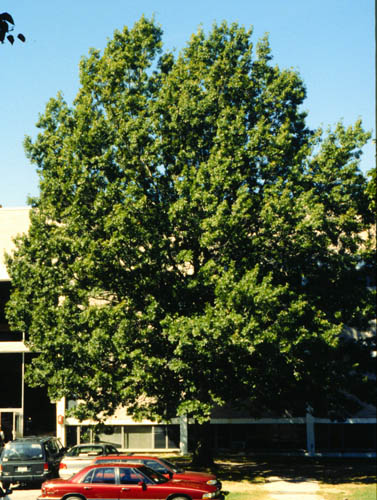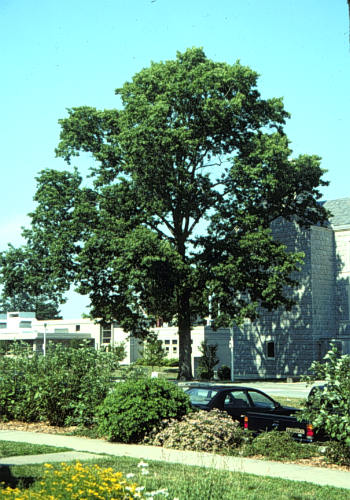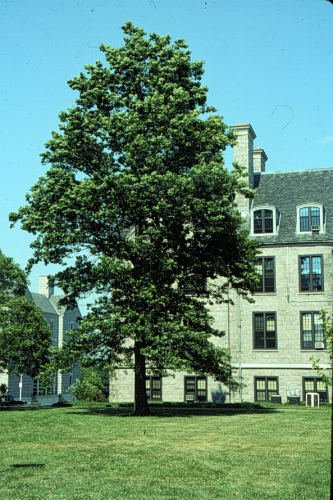Quercus palustris
Pin Oak, Swamp Oak
Fagaceae
ExpandHabitat
- northeastern and north-central U. S.
- zone 4
Habit and Form
- a large, deciduous tree
- 75' tall and 40' wide at its maximum
- pyramidal shape when young
- oval to gumdrop-shape when older
- unique branching pattern; lower branches pendulous, middle, branches horizontal, upper branches upright and spreading
- dense and twiggy
Summer Foliage
- alternate leaf arrangement
- leaves with shaply-pointed lobes
- 5 to 7 lobes, each with terminal bristles
- 3" to 6" long leaves
- fine textured
- matures to a shiny, dark green under good conditions
Autumn Foliage
- many trees have excellent russett, red or bronze color
- somewhat variable and poor trees are unimpressive and turn brown or tan
Flowers
- pale yellow-green catkins (male)
- blooms in mid-spring (May)
- monoecious
Fruit
- small acorns around 0.66" to 0.75" in diameter
- acorns take 2 years to mature (black oak group)
Bark
- stems greenish brown
- smooth bark on medium-sized branches
- main trunk with shallow ridges and furrows
- color is gray brown
Culture
- easily transplanted
- fast growing for an oak
- full sun
- prefers moist, fertile, acidic, well-drained soils
- needs adequate room to develop
Landscape Use
- shade tree
- lawn tree
- campuses
- industrial parks
- specimens for its unique branching habit
Liabilities
- iron chlorosis on high pH soils
- horned oak gall
- too large for many residential properties
ID Features
- fine textured leaves with narrow lobes
- sinuses of the lobes are "U"-shaped in contrast to Q. coccinea which has "C"-shaped sinuses
- distinctive drooping and ascending branching habit
- small acorns taking 2 years to mature
Propagation
- by seed
- for cultivars, by grafting, but incompatibilities and graft failures seem to be prevalent
Cultivars/Varieties
'Crownright' (also known as 'Crown Right') - This selection features a more upright habit with ascending branches. As a result, the lower branches do not droop to the ground and a negative aspect of this species is avoided.
'Green Pillar' (also known as 'Emerald Pillar') - This is a unique fastigiate form that may prove useful in the landscape if it becomes more available. The glossy leaves turn red in fall.
'Sovereign' - An outstanding cultivar, this plant exhibits excellent branching, form, vigor, and foliage quality. It also lacks pendulous lower branches. Unfortunately, the plant has shown graft incompatibility that may limit production and landscape utility.
